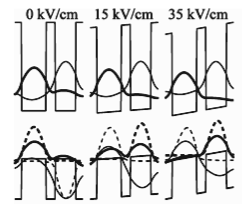Our group is working in the areas of optical communications, high frequency optical modulators, fiber communication, semiconductor lasers, vertical cavity lasers, and bio-photonics.
Faculty Involved
Research Topics
Bio-photonics

Biophotonics is the use of light (photons) to study biological material. Light interacts with living organisms and organic material, to provide useful information, such as early cancer detection, glucose monitoring for diabetes patients. Techniques include microscopy, imaging, and absorption spectroscopy.
High-speed Modulators

We are designing and fabricating ultrahigh-speed modulators for the telecommunications industry. This research has led to a start-up company, http://www.versawave.com. Current research is aimed at improving and characterizing the frequency response of quantum-well GaAs polarization mode converter modulators.
Nanowires
Optical Communications
As the demand for communications continuously increases, optical communications networks will become even more ubiquitous than they are today. In order to keep pace with the demand, we will require integrated photonic and electronic devices and systems that are low cost, small sized and support very high data rates. We are developing the next generation devices that will increase the capacity of optical communications networks, including optical modulators and semiconductor lasers.
Optical MEMS

We are working on miniaturized optical components such as stearable micromirrors and lenses, fabricated in MEMS technology. These components are used for measurement applications as well as for displays, non-homogeneous illumination and adaptive optics.
Optical Sensors
Vertical Cavity Lasers (VCSELs)

Vertical Cavity Surface Emitting Lasers (VCSELs) are very small and low power semiconductor lasers, useful for optical communications and biophotonics. We are developing high-speed VCSELs for 40+ GHz operation, and are designing VCSELs based on sub-wavelength grating and photonic crystals. We are using VCSELs for spectroscopy applications (e.g. glucose), and optical communications (e.g. radio over fiber, digital transmission).
Research Projects
Protein-based Solar Cell
Plants capture photons very efficiently. Can we learn from them in making photovoltaic devices? We are investigating the use of photosynthetic protein complexes in solar cells, with the aim of creating very low cost solar cells.